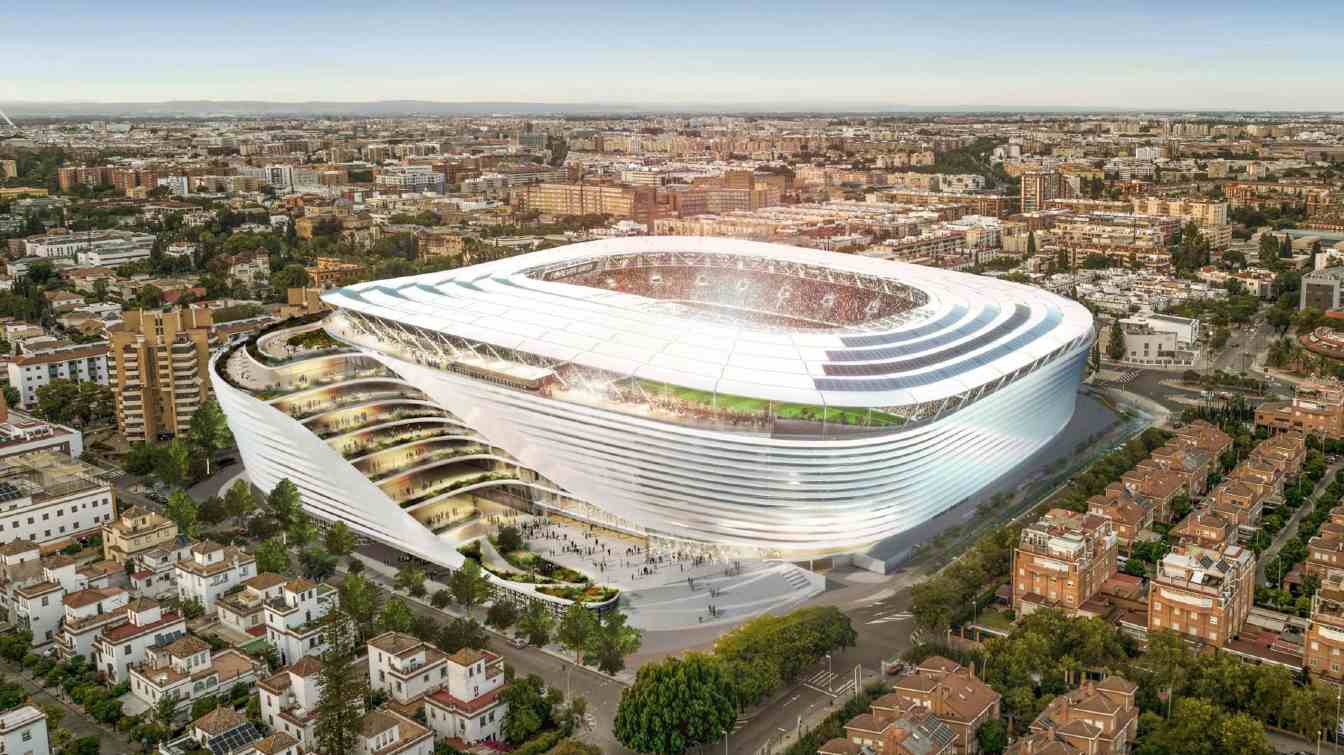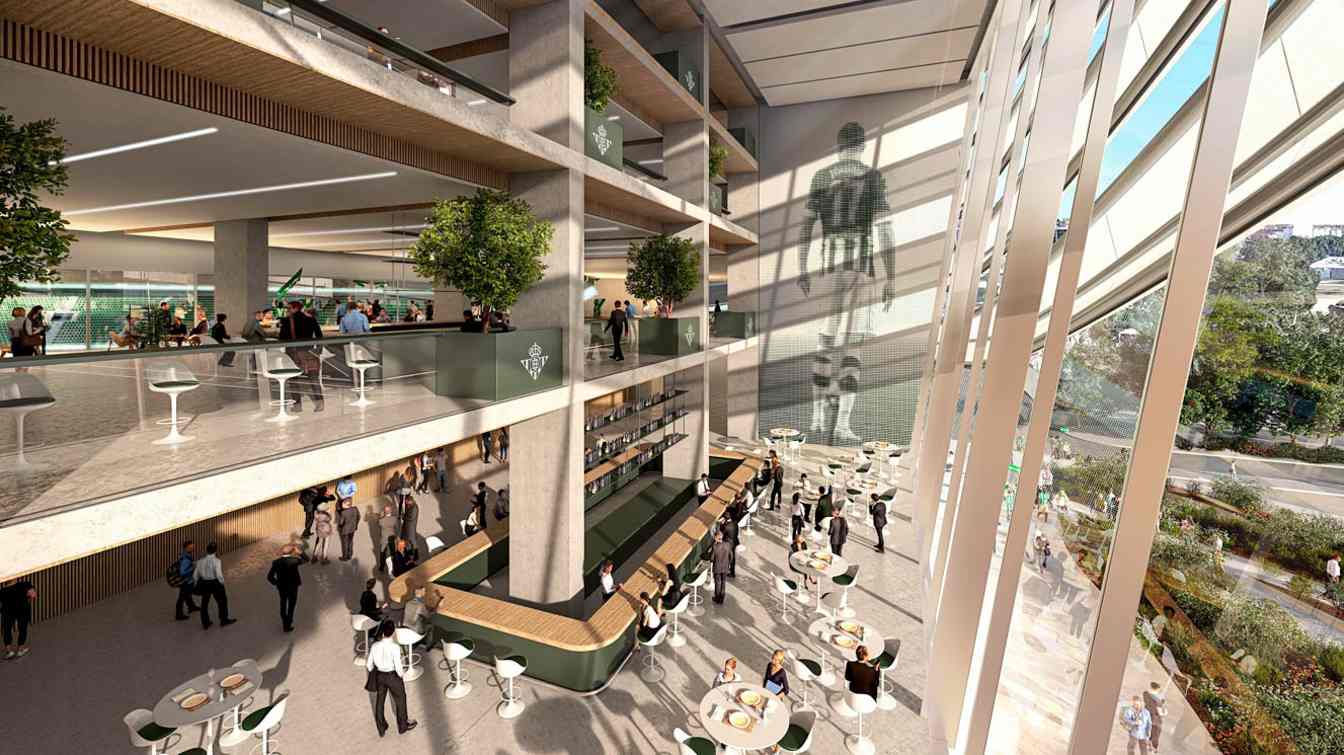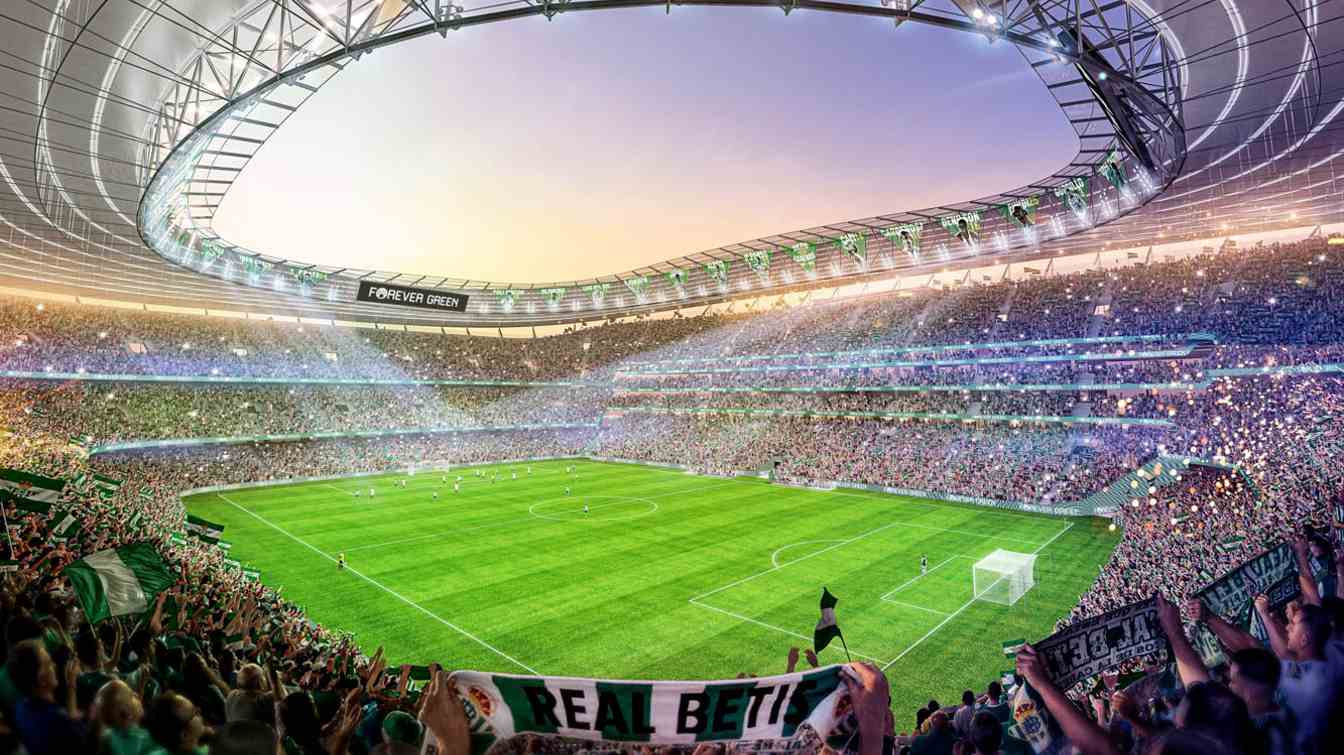Spain: Betis to move out for Benito Villamarín modernization
source: El Desmarque, StadiumDB.com; author: Miguel Ciołczyk Garcia
 It is the end of an era for Benito Villamarín, as the modernisation that will force Betis to move out is set to begin early next year. Further details of the project have been made public. The club have managed to partially calm the mood over the controversial project, bringing them closer to starting work.
It is the end of an era for Benito Villamarín, as the modernisation that will force Betis to move out is set to begin early next year. Further details of the project have been made public. The club have managed to partially calm the mood over the controversial project, bringing them closer to starting work.
Advertisement
The last dance on the old parquet?
As El Desmarque pointed out, if Estadio Ramón Sánchez-Pizjuán is designated as the arena for the match between Betis and Sevilla F.C in the first round of the 2024/25 season, Sunday's clash, which finished 1-1, will prove to be the last Derbi Sevillano played at the old version of the Verdiblancos' venue. While the green and white's players are battling to play in the European cups, the club's administration is pushing for a project that will see Estadio Benito Villamarín promoted to the first division of Europe’s stadiums.
We already have more information about the venue itself, as well as the building planned to be located right next to the stadium, which is causing concern among neighbours. Although this is not the end of the problems and controversy surrounding the design of the new Estadio Benito Villamarín, the club is already looking to the future with hope.
How will Benito Villamarín change?
According to local media, Betis uncovered further details about the planned upgrade during an informative meeting. The work on the stadium itself will focus on the Preferencia stand, the only one that has remained unchanged since the 1982 World Cup, which, when rebuilt, will have 15,754 seats, more than 4,000 of them premium. It will also have space for 180 guests in the so-called presidential box.
Benito Villamarín will also gain a new canopy of up to 47 metres in height, which will cover the totality of the stands. The capacity of the entire arena will not fall below the current. 60,000 seats, while the new club building, as announced, will most likely be used for a hotel, club offices and a regeneration sector.
Trade-off to ease emotions
The abandonment of the shopping centre idea in favour of a hotel should reassure residents who were concerned about traffic jams and noise. However, the problem of access to sunlight, as well as the transfer of the land for the new building from the city to the club, which was highlighted mainly by the political opposition, are still in question.
Sufficient lighting of the surrounding houses is supposed to ensure respect for the urban scale
, which in practice could mean reducing the height of the hotel. A solution also seems to have been found to the objections of the disadvantageous disposal of the plot for the city. Indeed, Betis is to provide public space next to the new building, as well as funding improvements to the surrounding landscape by, among other things, replacing metal fences with vegetation or creating a cycle path around the arena.
However, ABC de Sevilla reported that there is also an option to build several small buildings in the area instead of a structure hugging
the stadium, which would house a hotel, offices and a regeneration area.
A stadium open 7/365
Betis is also planning to create an auditorium with a capacity of up to 400 people, a new museum (with the possibility to visit the stadium) and doubling the parking spaces by a factor of 2 (from the current 400 to 800). There will instead be a pre-game area with food in front of the stadium, allowing fans to consume alcohol in front of the arena, as standards prohibit its sale inside the facilities.
In this way, thanks to a wide-ranging reform, Benito Villamarín is set to become a multi-purpose venue that will attract fans hours before the game, as well as becoming a tourist hotspot and a local hub of urban life. As Betis' general manager, quoted by El Desmarque, said, Using an infrastructure of this class for four hours once every 10 days does not make sense.
How much will the new Benito Villamarín cost and when will it be built?
The club is aiming to start work, divided into phases, in early 2025 and complete it in around two years. For most of the duration of the upgrade, the team will play at Estadio la Cartuja, Betis general manager Martínez Feria was quoted as saying by El Desmarque. However, the work to adapt the facility for the 2030 World Cup could become an inconvenience, especially if it takes more than planned.
The budget for the upgrade is expected to be just over €100 million. The environmental impact of the planned infrastructure is currently being examined, and neighbours can submit their proposals on the project for consideration by the city. The question is whether the club has managed to calm the mood enough for residents or politicians not to boycott the upgrade. The ball is now in the city's court, however, and Betis is waiting for the green light to make the ambitious vision of a new home for los Verdiblancos a reality.
Advertisement

 StadiumDB
StadiumDB ©
©  ©
©  ©
©